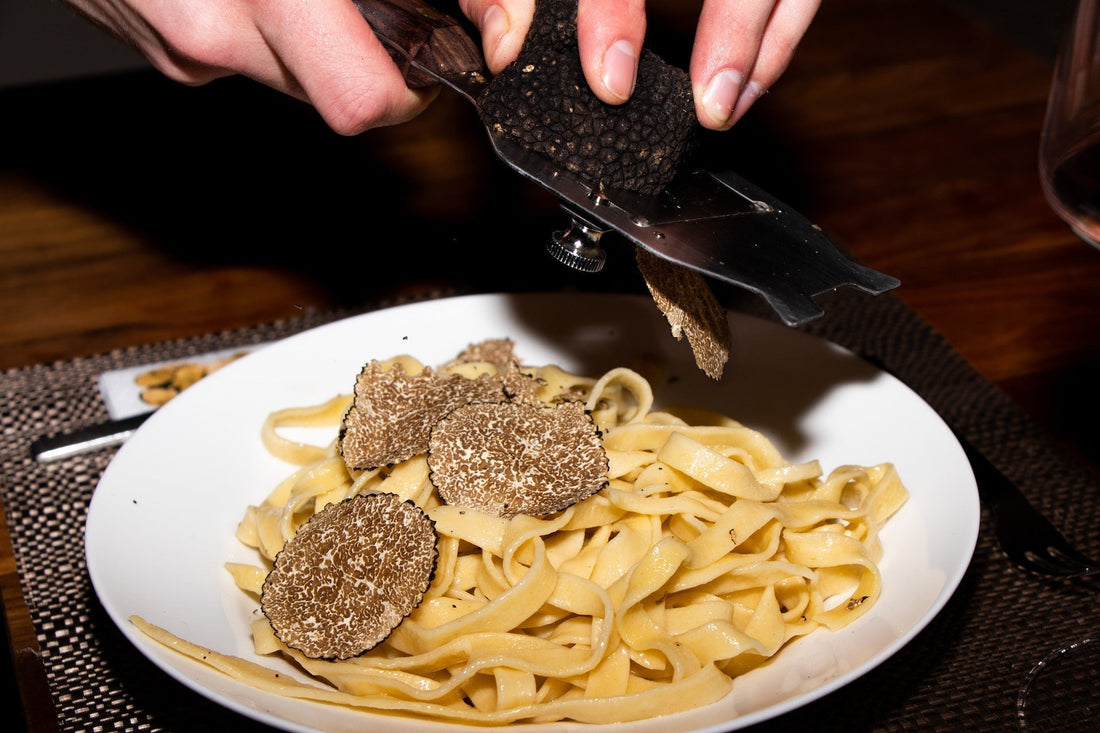
The connoisseur's guide to buying French truffles
Truffles, often referred to as the "black diamonds" of the culinary world, are one of the most prized and luxurious ingredients in French gastronomy. These elusive fungi grow underground, typically at the base of certain types of trees, like oaks and hazelnuts, with which they have a symbiotic relationship.
Buying truffles can be an art form in itself, requiring a discerning eye, a keen nose, and an understanding of truffle varieties and their seasons. Here's how to navigate the world of French truffles and make a purchase worthy of the finest tables.
Understanding Truffle Varieties
Before buying truffles, it's crucial to know which type you're seeking. The Périgord black truffle, also known as the winter black truffle, is highly coveted for its intense aroma and flavor, and it is generally available from November to March. The Burgundy truffle, which is milder, can be found from September to December. Summer truffles (Tuber aestivum) are less aromatic and are harvested from May to August.
Seasonality and Freshness
Truffles are seasonal, and their quality can vary significantly throughout the year. The peak season for the most aromatic truffles is in the winter, particularly from December to February. When buying fresh truffles, look for specimens that are firm to the touch and free from soft spots. A fresh truffle should have a pungent aroma that is both earthy and intoxicating.
How to select good truffles
When selecting truffles, size does not necessarily equate to quality. Instead, focus on the aroma and the exterior texture. The truffle should have a strong, pleasant smell, and the skin should have a slightly bumpy texture, indicating maturity. Avoid truffles that are too smooth or have an ammonia-like smell, as this can be a sign of overripeness.
How to store fresh truffles
Once purchased, truffles should be consumed quickly to enjoy their full flavor. Store them in the refrigerator wrapped in paper towels and placed in an airtight container. Change the paper towels daily to prevent moisture buildup. Truffles can also be stored in a jar of rice, which will absorb the aroma, making the rice a delicious byproduct for cooking. Pricing: Truffles are priced by weight, and the cost can vary widely depending on the variety and the season.
Be prepared for a significant expense; truffles are one of the most expensive foods in the world due to their rarity and the labor-intensive process of harvesting them. Buying French truffles is a luxurious endeavor that can elevate any dish to a gourmet level. Whether you're a seasoned chef or an enthusiastic foodie, the experience of selecting and savoring a fresh truffle is unparalleled.
Remember to buy seasonally, focus on freshness and aroma, and use your truffles generously to make the most of their exquisite flavor. With these tips in hand, you're ready to embark on the ultimate culinary adventure. Bon appétit!




